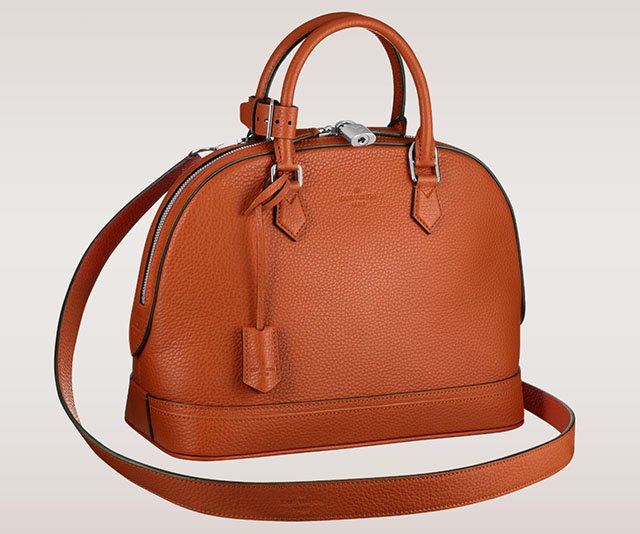Introduction
The Louis Vuitton Alma bag is a true symbol of luxury, elegance, and craftsmanship. From its Art Deco-inspired roots to its modern reinventions, the Alma has captured the hearts of fashion enthusiasts for decades. Originally designed as a chic and practical bag for Parisian women, it quickly became a staple of Louis Vuitton’s iconic collection, appealing to generations of consumers. The Alma represents more than just a handbag; it embodies a commitment to innovation while staying true to the brand’s storied history. This article explores the evolution of the Alma bag, its historical significance, and how it has managed to remain a beloved piece across multiple generations of fashion lovers.
The Birth of the Alma Bag
The Alma was first introduced in 1934 and was originally designed by Gaston-Louis Vuitton, the grandson of Louis Vuitton, to cater to the high-end, functional needs of Parisian women. Its rounded, structured shape drew inspiration from the Art Deco movement, with bold lines, geometric patterns, and sophisticated materials. The Alma’s sleek silhouette and signature Monogram canvas made it an instant hit, merging form with function in a way that was innovative for its time.
Art Deco Influence: A Marriage of Style and Function
When it was first conceived, the Alma was heavily influenced by the Art Deco movement, which was known for its focus on geometric shapes, bold colors, and luxurious materials. The bag’s structured shape and use of the Monogram canvas reflect the glamour and sophistication of the era. The Art Deco influence also conveyed a sense of modernity and innovation, which helped establish the Alma as a forward-thinking design from the very beginning. Its refined elegance made it the perfect accessory for women in the know, from stylish Parisian socialites to international jet-setters.
Alma’s Position in Louis Vuitton’s Heritage
Throughout its history, the Alma has occupied a prominent place within Louis Vuitton’s collection. Over the years, it has been made available in various materials, including the iconic Monogram canvas, Damier Ebene, and luxurious leather finishes. The Alma became associated with Parisian chic, a status symbol for those who wanted to showcase their impeccable taste. From its earliest days to the present, the Alma has stood as a testament to Louis Vuitton’s commitment to creating bags that are both beautiful and functional.
Modern-Day Reinventions
While the Alma’s original design has remained largely unchanged, Louis Vuitton has continually refreshed and modernized the bag over the years. The introduction of the Alma BB, a smaller version of the original, catered to a younger audience while retaining the bag’s timeless charm. Louis Vuitton has also experimented with bold colors, luxurious materials, and unique patterns, such as the Monogram Vernis, which introduced a glossy finish to the traditional canvas, and the Alma in exotic leathers like crocodile and ostrich. These modern updates ensure that the Alma remains relevant to contemporary tastes, appealing to a broader and younger consumer base while maintaining its classic appeal.

Generational Appeal: A Timeless Icon
The Alma’s enduring success lies in its ability to appeal to multiple generations of consumers. For older generations, the Alma represents classic luxury and tradition, a nod to a bygone era of Parisian glamour. For younger generations, the bag’s versatility and chic design make it the perfect statement piece for both casual and formal occasions. The bag’s balanced combination of elegance and practicality makes it equally suitable for both daytime errands and evening events, ensuring its continued popularity across different lifestyles and age groups.
Customization and Personalization
Louis Vuitton’s customization services have also played a role in the Alma’s enduring popularity. The ability to personalize the Alma bag with initials, charms, or unique linings allows customers to make the bag their own, adding a layer of exclusivity and individuality. As personalization becomes an increasingly important aspect of luxury shopping, the Alma offers a perfect canvas for expressing one’s personal style.
Alma as a Cultural Icon
Over the decades, the Alma has transcended its role as a handbag and become a cultural icon. It has been carried by countless celebrities and fashion icons, from the legendary Grace Kelly to modern-day influencers. Its timeless design ensures that it will always be a part of the fashion conversation, whether it’s seen on the streets of Paris or in the hands of a social media influencer. The Alma has managed to stay relevant in an ever-changing fashion landscape, proving that true design excellence never goes out of style.
Conclusion
The Louis Vuitton Alma bag stands as a symbol of elegance, innovation, and timeless appeal. From its Art Deco-inspired beginnings to its current status as a modern icon, the Alma continues to capture the imagination of fashion lovers around the world. By blending rich history with contemporary updates, Louis Vuitton has ensured that the Alma remains a beloved classic, appealing to multiple generations and adapting to the changing tastes of modern consumers. Whether carried as a statement of luxury or customized to reflect personal style, the Alma is a true testament to Louis Vuitton’s legacy of excellence in craftsmanship and design.












































